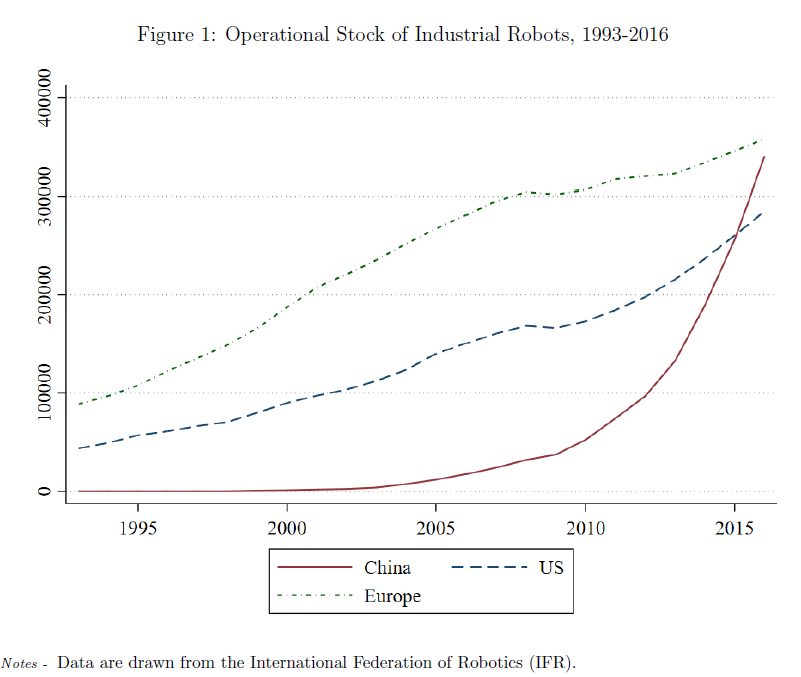Yes, it is; and the paper highlighted today claims to be the first to take a detailed look at how robots are disrupting labor markets in the developing world. It must therefore also be the first paper to look at this issue in detail from a China perspective?
In a Discussion-Paper-Series paper for the IZA Institute of Labor Economics Osea Giuntella and Tianyi Wang, both of the University of Pittsburgh, looked at trends in China from 2000 to 2016 and what they found is disturbing.
Since 2013 China has been the biggest global buyer of industrial robots and now has an installed based bigger than any other manufacturing economy. The picture below is slightly misleading (not just because it’d properly benefit from a log-scale) as it doesn’t show on a per-capita basis where China is. It still lags behind many developed Western manufacturers; but you get the point, the trajectory of installation has been impressive.

This growth though has been accompanied by a what the researchers describe as “..a large negative impact..”. They show, over the period, that’s it has “..affected internal mobility and increased the number of labor-related strikes and protest.” Moreover, these negative collateral effects have fallen most heavily on low skilled, male, prime age and older workers.
The process only looks like intensifying and the paper gives the example of Foxconn who claim to have replaced 400,000 workers from 2012 to 2016 and has announced plans to be 30% automated by 2020.
These problems have been discussed at some length in developed markets so it comes (to me at least) as somewhat of a surprise to discover they’re also present, and perhaps to a greater degree, in less developed ones.
The paper stops short of addressing the obvious next questions of what policies could be introduced to alleviate the worst effects for displaced workers and how a fresh surplus of low-quality labor could best be repurposed.
While the policy wonks are trying to figure those issues out expect more strikes, social unrest and general unhappiness from those in the firing line of this unstoppable ‘progress’. In China now as well as the rest of the world.
You can access the paper in full via the following link Is an Army of Robots Marching on Chinese Jobs?
Happy Sunday.